Temple survivor
The temple of Preah Vihear has lived through tough times and come out the other end in pretty good nick. In recent years it was a pinball passing back and forth between Khmer Rouge guerrillas and the Cambodian government army forces and if it was up to near neighbours Thailand, it would be part of a new pinball game. Nevertheless, it has been awarded the status and recognised as a World Heritage site and in theory that means it's future is pretty much assured. I'm quite surprised so much of the temple and its iconography has managed to last this long. The Khmer Rouge and rogue elements of the government army have been known for their predeliction in selling ancient Khmer artifacts, much of it via a route through its nearest neighbour - Banteay Chhmar being a prime example - hence my amazement that it wasn't systematically violated whilst out of the public eye. Let's be thankful that we still have much to see today. On my recent visit, I walked from Gopura V along the causeway, recalling to my brother that the last time I was there, mine-clearers were at work on both sides of the walkway, removing landmines from under my nose. Now the temple grounds are clear of mines but not of soldiers, who form a ring around the temple, heavily-armed and ready for action, after recent infiltrations by the Thai army. It seems that even today, with World Heritage status acknowledged on signs around the temple site, the war for ownership doesn't look like ending anytime soon. Just before Gopura IV there is a large stepped basin off to the left where the families of the army personnel have sourced much of their water supply in recent months. The Gopura itself is from the 11th century in its style, has a wealth of pediments and lintels in good condition, though some of its doorways have fared less well. The most notable pediment is the Churning of the Ocean of Milk, on the south side, with Vishnu reclining underneath, giving birth to Brahma - read more here.
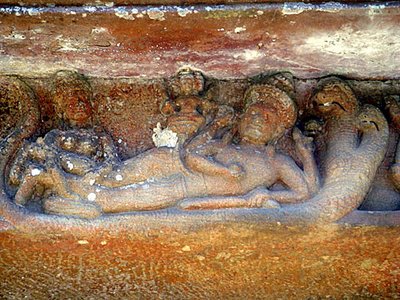 Below the Churning pediment is this carving of Vishnu reclining and the birth of Brahma with Lakshmi also present
Below the Churning pediment is this carving of Vishnu reclining and the birth of Brahma with Lakshmi also present
 Below the Churning pediment is this carving of Vishnu reclining and the birth of Brahma with Lakshmi also present
Below the Churning pediment is this carving of Vishnu reclining and the birth of Brahma with Lakshmi also presentLabels: Preah Vihear
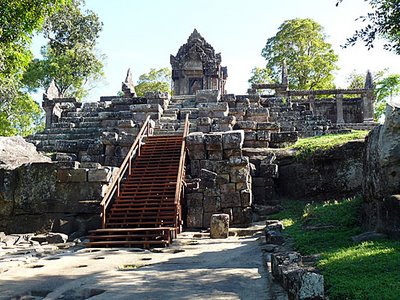
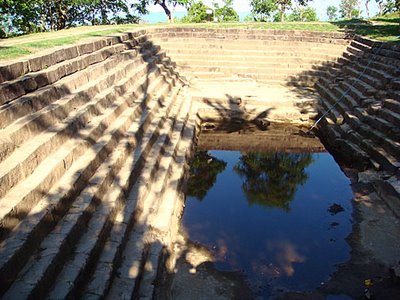
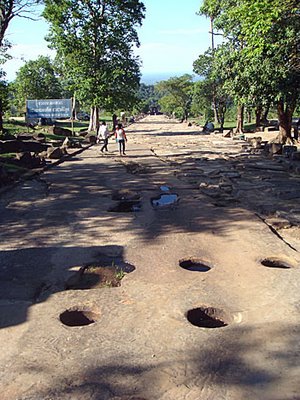
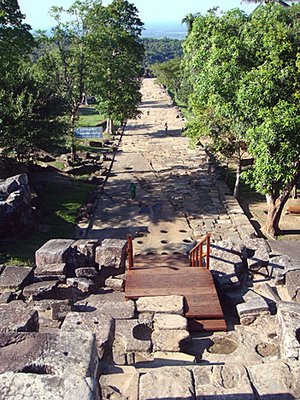
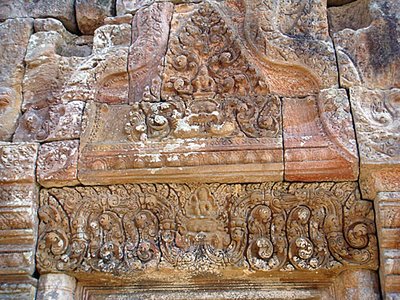
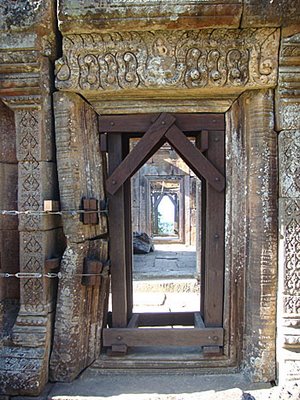
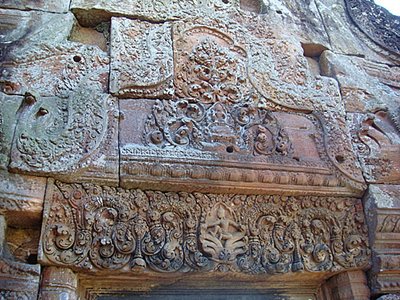
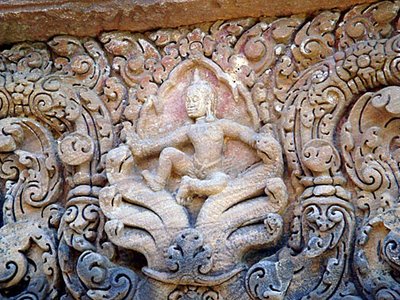
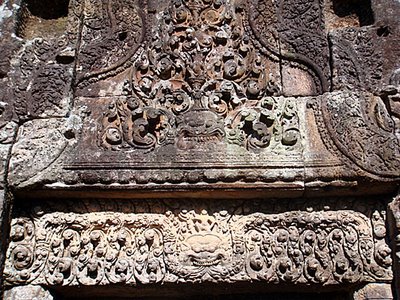
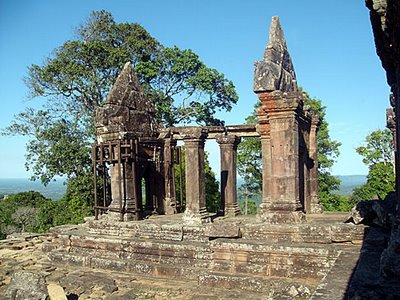
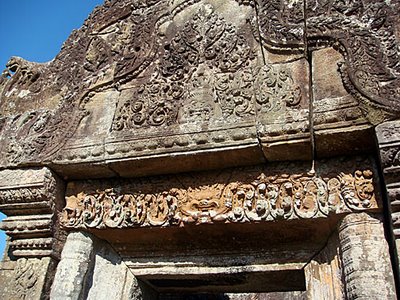
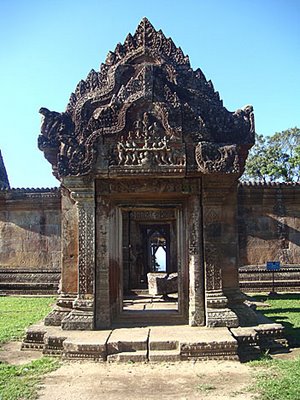
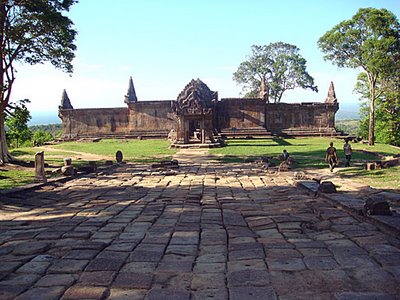


1 Comments:
thanks very much for the photos...
Post a Comment
<< Home